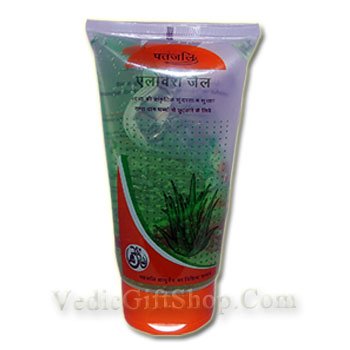Description
Bel Identity
Latin – Bel herb
Family – Rutaceae
Generic – Bael, Sirphal
English – Wood apple, Bengal Quince
Origin & Distribution
Bel herb is found in sub-Himalayan tract, central & Southern India.
Physical Appearance
Bel fruit tree is slow growing, of medium size, up to 12-15 m tall. A clear, gummy sap, resembling gum, exudes from wounded branches & hangs down in long strands, becoming gradually solid. Bel herb is sweet at first taste & then irritating to throat. Mature leaves emit disagreeable odor when bruised. Flowers are yellow in color fragrant & in clusters of 4 to 7 along young branchlets, fruit, round, oval, or oblong, 2 to 8 in in diameter, might have thin, hard, woody shell or more or less soft rind, gray-green until fruit is fully ripe, when Bel herb turns yellowish.
Important parts used
Fruit , root-bark, leaves, rind, flowers
Medicinal properties
- Anti bilious
- Anti parasitical
- Antipyretic
- Aphrodisiac
- Aromatic
- Alterative
- Astringent
- Digestive stimulant
- Febrifuge
- Haemostatic
- Laxative
- Nutritive
- Stomachic
- Stimulant
- Tonic
Health Benefits
- Ripe fruit is sweet, aromatic, cooling, alterative & nutritive.
- Fresh fruit has laxative properties.
- Unripe fruit is astringent, digestive, stomachic, & constipative.
- Pulp is stimulant, antipyretic & antiscorbutic.
- Fresh juice is bitter & pungent.
Composition
- Chemical studies have revealed following properties inroots – psoralen, xanthotoxin, O-methylscopoletin, scopoletin, tembamide, & skimmin; also decursinol, haplopine & aegelinol.
- Barkcontains tannin & cournarin, aegelinol; also furocourmarin, marmesin; umBel herbliferone, hydroxy coumarin; & alkaloids, fagarine & skimmianine.
- Bitter, light-yellow oil extracted from seeds is given in 1.5 g doses as purgative. Bel herb contains 15.6% palmitic acid, 8.3% stearic acid, 28.7% linoleic & 7.6% linolenic acid. seed residue contains 70% protein. Pulp also contains balsam-like substance & 2 furocoumarins-psoralen & marmelosin, highest in pulp of large, cultivated forms.
- Essential oil of theleavescontains d-limonene, 56% a-d-phellandrene, cineol, citronellal, citral; 17% p-cyrnene, 5% cumin aldehyde. leaves contain alkaloids O–halfordinol, N-2-ethoxy-2- ethylcinnamide, N-2-methoxy-2-[4- phenyll]ethylcinnamide, & N-2-methoxy-2–ethylcinnamamide.
Preparations
Decoction, Leaf-juice, powder
Remedies for disorders
- Cardiovascular body system – Decoctions of root are taken to relieve palpitations of heart.
- Leaves of Bel herb contained digoxin-like active principles which were found to be cardio active substances as indicated & confirmed by pharmacological studies.
- Respiratory body system – leaf decoction is said to alleviate asthma.
- Digestive body system – Decoctions of root are taken to relieve, indigestion, & bowel inflammations; also to overcome vomiting. Unripe bel is most prized as means of halting diarrhea & dysentery, which are prevalent in India in summer months. fresh ripe pulp of higher quality cultivars, & “sherbet” made from Bel herb, are taken for their mild laxative, tonic & digestive effects. A decoction of unripe fruit, with fennel & ginger, is prescribed in cases of hemorrhoids. Claims have been made that Bel herb relieves chronic flatulent colic in patients suffering from chronic gastro-intestinal catarrh. Bel herb is helpful in sprue also. Bel herb also gives good results in amoebic dysentery.
- Skin – bark decoction is administered in cases of malaria. Bel herb has been surmised that psoralen in pulp increases tolerance of sunlight & aids in maintaining of normal skin color. Bel herb is employed in treatment of leucoderma.
- Eye – decoction of flowers is used as eye lotion
- Nutrition & metabolism – Bel herb is good source of vitamins
- Immunity body system – fruit, roots & leaves have antibiotic activity. root, leaves & bark are used in treating snakebite
- Reproductive body system – Bel herb is used in inflammation of uterus, leucorrhoea & puerperal disorders.
Food Value Per 100 g of Edible Portion of Bilv fruit
Water – 54.96-61.5 g
Protein – 1.8-2.62 g
Fat – 0.2-0.39 g
Carbohydrates – 28.11-31.8 g
Ash – 1.04-1.7 g
Carotene – 55 mg
Thiamine – 0.13 mg
Riboflavin – 1.19 mg
Niacin – 1.1 mg
Ascorbic Acid – 8-60 mg
Tartaric Acid – 2.11 mg








Reviews
There are no reviews yet.